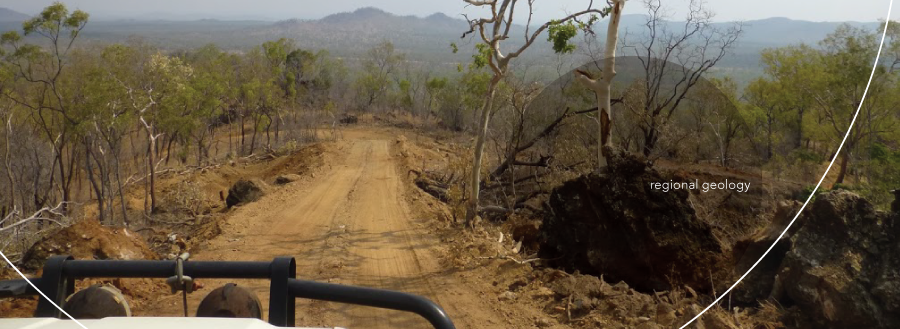
The Chillagoe mineral district occupies part of a prospective, structurally dislocated Proterozoic granitoid and metamorphic sequence intruded by a suite Palaeozoic acid volcanic related intrusives. All of the area west of the Palmerville Fault, which forms the boundary between the crystalline metamorphic rocks, and sediments of the much younger Paleozoic Age Hodgkinson Fold Belt (locally represented by the Chillagoe Formation).
Recent exploration of the metamorphic rocks of the area has recognized a major structural feature, named the Cardross Muldiva Shear Zone. The zone is defined on aeromagnetic data as a series of north-westerly trending highs passing through the Muldiva prospects, and is probably related to the Palmerville Fault. Proterozoic rocks of the Dargalong Metamorphics typically underlie OzCrest’s tenements.
The Dargalong Metamorphics consist of metasediments that are dominantly schistose and gneissic granitic rocks with amphibolite lenses, all metamorphosed to amphibolite faces.
These rocks have been extensively intruded by Palaeozoic intrusives, including the possibly Silurian massive felsic Nundah Granodiorite and later (Permo-Carboniferous) porphyries, Rhyolites and dolerite dykes. The Late Palaeozoic intrusives form part of the Kennedy Igneous Province, which is associated with a number of economically important mineral Deposits including the Kagara Ltd Mungana operation (gold, silver and base metals), the worked-out Kidston and Red Dome gold mines, the historic Chillagoe copper mine and Herberton-region tin deposits.
These intrusives include major rhyolite domes, breccia pipes and rhyolite and dolerite dykes. Mineral deposits in this belt are frequently associated with strongly fractionated granitic rocks, and high level breccia pipes are commonly the focus of mineralisation. A remnant cover of Cretaceous marine sediments remains, especially in the north-western Part of the area. This cover obscures the surface geochemical signature of mineralisation.
Oxidation and weathering is often only near surface (less than 15m) due to relatively Recent stripping of the Cretaceous sediments. Alluvium obscures outcrop near present day creeks as in the Muldiva Creek valley.
